Inclusive Instructional Leadership: Three Districts Foster a Culture of Learning and Achievement
July 2025

Leaders at the district, school, and classroom level are finding ways to work more effectively to engage each and every student in learning. By creating collaborative school cultures that involve adults and students in decision-making about their own learning, and by focusing the combined efforts of educators at all levels on instructional improvement, students are achieving more – sometimes far exceeding educators’ expectations.
In New Philadelphia City Schools, The Richland School of Academic Arts (RSAA), and the Washington Court House City Schools, educators are using leadership team structures and inclusive instructional leadership (IIL) practices to impact student achievement.
Inclusive instructional leadership (IIL) supports educators in school districts and schools to promote high levels of learning for all students, including students with learning challenges and/or those receiving special education services. It focuses on instructional leadership through the use of four key strategies – (1) promoting systemwide learning, (2) prioritizing teaching and learning, (3) building capacity through support and accountability, and (4) sustaining an open and collaborative culture – and associated leadership team structures [i.e., district leadership team (DLT), building leadership team (BLT), and teacher- based teams (TBT)].

In Ohio, an evidence-based improvement framework is used by many districts and community schools, which combines two major components: (1) the use of a data-driven decision-making process (commonly referred to as a plan-do-study-act or PDSA cycle) and (2) the use of aligned collaborative leadership teams (e.g., DLT-BLT-TBT)structures. These components are at the core of the Ohio Leadership for Inclusion, Implementation, and Instructional Improvement (OLi4) and the Advancing Inclusive Principal Leadership (AiPL) professional learning opportunities designed and offered through the University of Cincinnati Systems Development & Improvement Center (UC SDI) with support from the Ohio Department of Education and Workforce.
Over the past two years, New Philadelphia City Schools participated in the AiPL program, and both RSAA and Washington Court House City Schools participated in OLi4. A description of their experiences and the impact on students, which they attribute to their participation in OLi4 and AiPL, follows. For more information about OLi4 and AiPL professional learning, go to https://ohioinclusiveinstructionalleadership.org/aipl/.
Toward Systemwide Engagement & Student Impact
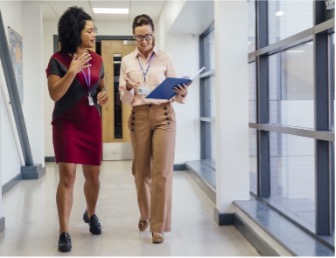
All three districts – New Philadelphia, RSAA, and Washington Court House – saw improvements in adult and student learning through their involvement in Ohio IIL professional learning opportunities. Often, improvement efforts started small – with one or two individuals participating in the professional learning – and grew to include additional educators and schools. The goal in all three districts is systemwide engagement and continuous improvement through the meaningful involvement of all faculty and staff and increased achievement on the part of all students.
“What started with one individual, a principal, in OLi4 will expand to have additional folks participating in AiPL next year, which is going to be awesome, and we're excited about it. For us, it’s about building our structures and increasing teacher engagement in the process. When I came in, there wasn't a lot of that going on, and I wanted the principal to build that leadership capacity within our staff. That has definitely happened over the course of the last two years as a result of OLi4,” explained Scott Will,Superintendent of RSAA. Will has been Superintendent of RSAA for about five years, having spent 20 years in a traditional public school district.

RSAA is a community school in Mansfield, Ohio that serves about 350 K-8 students through the integration of academic core curriculum and visual and performing arts. One hundred percent of the student population is characterized by the state as economically disadvantaged with the majority of students being Black or biracial. “This year is the first year where our Black and biracial population is higher than our Caucasian population. That's exciting, too, because for us, that's more reflective of our community and it's been important for our families to see,” said Will.
Dr. Tom Bailey, who served as Washington Court House City Schools superintendent for eight years and recently resigned to take a position in another district, describes his approach to involving principals in OLi4 since being introduced to the program by SST Region 14 Director Jeff Royalty:
Each year since my second year in the district, we've been sending one or two school leaders to participate in OLi4 professional development. Despite principal turnover, I'm happy to say that right now, every building’s leadership has gone through the OLi4 program and, as a result, we're all flowing together, there is more uniformity across the buildings, and our principals are finally being the instructional leaders that they need to be within their building and leading their teams.
In New Philadelphia City Schools, what started with one team in South Elementary School expanded to additional schools, principals, and teachers becoming engaged in the work. “Our two K-1 principals overheard Christa (Frantz) talking about AiPL and decided to get together with teacher leaders from both buildings every month. They worked on an overarching week-by-week syllabus for both buildings to use, and then had the teachers talk about their experience at their PLCs back at their buildings. We found this to be successful and when these two principals heard that there was principal PD focused on the same practices as AiPL, they were really pumped to be able to go and learn even more. Both principals will be participating in OLi4 next year,” said Williams.
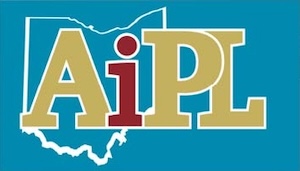
AiPL requires partner districts to identify a school to serve as an “incubator site,” identifying strategies for increasing student engagement, learning from the experience, and scaling what has worked well to other schools in the district. AiPL teams include members from the incubator school (i.e., principal, teachers, others) and central office personnel, including the person responsible for special education services in the district. New Philadelphia’s South Elementary School, led by Principal Christa Frantz, served as the “test” school in AiPL.
“We’re a grade 2-3 building and our AiPL team is representative of the building in that there are two second grade teachers, two third grade teachers, a Title teacher, and a special education teacher. Mr. Williams and our Special Education Director are also part of the team and members are also on our PBIS team and on our BLT,” offered Frantz. “This helps bring the work to the rest of the staff through TBTs, and during DLT and PBIS meetings. It’s been really great in helping everyone use the same language, streamline the work, and work toward the same goal, but maybe through different lenses,” she added.
Elevating teacher voice, increasing teacher collective efficacy. “Using the word ‘engagement’ and having the teachers reflect has really made an impact. Mrs. Frantz has implemented many other initiatives that have helped, but I think AIPL over the last two years has really been a big part of engaging teachers and supporting them in reflecting on their own and student learning,” explained Williams.

“Those teachers leading their colleagues through the process of what our expectations for students should be was key to everyone being involved in the process, and really understanding that we valued their opinion, and that this was not us telling them; this was us together with teachers deciding what was best and using their voice,” recalled Frantz.
Teacher collective efficacy – teachers’ belief in their ability to positively influence student learning – is an important factor in impacting student achievement and one that has been evaluated as part of the OLi4 initiative. Simply put, principals from all parts of Ohio who participated in OLi4 improved teacher collective efficacy in their schools.
In one case study conducted through the OLi4 project evaluation team, Celina City Schools district leaders reported that “OLi4 reinforced the idea of collective teacher efficacy and sharing those mastery experiences through their teams... they made it possible for all principals to participate together in OLi4 so they would be able to talk about their new learning and work collaboratively to implement that new learning.” (ohioleadership.org). Similarly, in Kent City Schools, “By connecting individual leadership coaching with teacher team support… Kent City School District is building collective efficacy and a collaborative culture of continuous improvement.” (escneo.org).

Principals in OLi4 learn how to be collaborative leaders. Research in Mid-Western Educational Researcher (Howley, et al., 2019) examined OLi4’s impact via a quasi-experimental design. It found statistically significant improvements in principals' attitudes toward inclusive instructional leadership, especially in areas like collaborative problem-solving and professional learning (effect sizes .47 for attitude, .38 for practice) (mwera.org). Since collective efficacy thrives on shared leadership and joint instructional reflection, this suggests OLi4 fosters conditions for teachers’ collective belief to grow.
In a 2022 Learning Policy Institute report that reviewed principal professional learning programs, Darling-Hammond and colleagues described OLi4 as “perhaps the most intensive and tightly focused approach” of the programs studied, which seeks to build principals’ capacities to be inclusive instructional leaders (p. 34). Authors further noted that “comparing survey responses of participants to those of a matched control group, researchers found that program participants reported significantly higher ratings both on their attitudes toward inclusive instructional leadership practices and on their practices of working with teachers on collaborative problem-solving and collaborative professional learning.” (p. 24).
Superintendent Will describes increases in principal capacity to engage teachers in collaborative problem-solving in RSAA:
A few people had been the voices for many years, and OLi4 helped create some balance in terms of staff being able to sit around the table and sift through what we needed to accomplish. How can we align things? What do we want for our students? We went from having five different math curriculums to one, and from two different ELA curriculums to one. We went from the same folks being on the same committee, getting the same stipend every year, to branching out because If we're making decisions in this building, we need to make sure that we have a K-2 teacher that's part of our BLT, we need to make sure that we have an intervention specialist as part of our BLT. So, just opening those doors and, at the same time, being able to explain to everyone why we need the doors open. The biggest takeaway this year has been the conversations with staff just about different initiatives and things going on where we don't just have a few people talking about it. Everybody knows and is talking about it, and it's really guided our work for what we're doing this summer in preparation for next year in terms of continuing to build capacity.
When Will joined RSAA almost five years ago, “there were two people making all the decisions for the building” and he worked to establish what he calls “a firm foundation of leadership structures.” “I expanded the leadership team to four people to serve as our DLT, had six other individuals who were part of the BLT, and from there our buildings separated into pods, which became TBTs,” he explained.
In New Philadelphia, Williams recalls the first AiPL team meeting during which participating teachers continued to refer to him as Mr. Williams even though he repeatedly asked them to call him Jeff. “After two years in AiPL, teachers are not afraid to speak. I see teachers that I can lean on now as leaders, and it was through AiPL, and the techniques and methods that were used. Participating in the program made those teachers more confident in their abilities, and I know they’re going to help take what we’ve learned at South district-wide. These are teachers that really grew specifically through AiPL. So you're talking about people and the effect on our staff; that's what I saw that over the last two years.” “We’ll be working on involving more schools in the process,” he said.
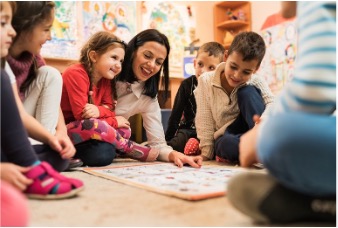
Return on (Instructional) Investment
All three districts – New Philadelphia, RSAA, and Washington Court House – saw improvements in adult and student learning. During South’s first year in AiPL, the team focused solely on students, teaching characteristics of the academic behavior they wanted to observe in the classroom. “We called it Quaker PRIDE – Perseverant, Responsible, Inquisitive, Determined, and Engaged – and spent a lot of time honing in on what this looked and sounded like in the classroom through literacy activities,” explained Frantz. In year two, the AiPL team focused on staff and what it meant to be reflective about the practices they were using.
“We talk a lot about how what we do as adults is going to influence what we see from students.”
- Christa Franz, Principal
South Elementary School
New Philadelphia City Schools
“I really feel very strongly that the focus on PRIDE that we developed with the team was definitely a collaborative effort; the AIPL team was the group that led that work. Developing what that looked like through the feedback we got from teachers, and how we rolled that out to students, and have continued to have those expectations for academic behavior in the classroom, has made a big change for our test scores this year. All of us being consistent and using that same language and having the same expectations for behavior academically in the classroom. You could ask any staff member, whether they were part of the AiPL team or not, what contributed to our real change in test scores this year, and I think they would tell you AiPL was a big part of it,” said Frantz.
Working differently, exceeding expectations. Frantz reported that South’s grade 3 ELA proficiency rates, which hovered around 50% in recent years – 54% in 2022-23 and 53% in 2023-24 – increased to 72% in 2024-25, exceeding the district’s expectations.3 Math proficiency also rose between 2023-24 and 2024-25, from 51% to 68%, underscoring the importance of holding high expectations for student achievement, clearly communicating those expectations to all students, using evidence-based instructional practices, engaging each student in learning, and providing support where needed to assist every student to learn and achieve more.
These results also highlight the power of teachers working together, informing each other’s instruction, and believing that they can reach and teach all children. “We talk a lot about how what we do as adults is going to influence what we see from students,” said Frantz.
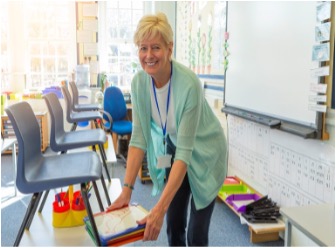
“We’re very very proud of the work of the results and I truly think AiPL made the impact. It made teachers stop and ask, ‘am I engaging kids, is this student engaged?’ We learned different ways of communicating because sometimes teachers struggle being told what to do by other teachers. We learned through AiPL that it’s not really telling; it’s working collaboratively,” recalled Williams. The increase in ELA and math proficiency rates were not seen in other New Philadelphia schools.
Bailey and Wills also noticed that principals and teachers working differently. “When I got to Washington Court House, there was a whole math curriculum sitting in boxes never opened. Through OLi4, principals were holding teachers accountable for implementing the curriculum, but they were also helping to guide them through implementation, as opposed to just throwing it at them and saying, ‘here, have fun!’ It was deeper, it was richer, and less surface-level about implementation. The conversations were about why we're doing this, and what needs to be done, not only in curriculum, but in taking into account the students and their needs,” described Bailey.
“The biggest thing I noticed is the interaction and engagement of my principal with the staff. He became more of a mentor and facilitator of what they were trying to do. It definitely created a better climate,” said Will. “The accountability and ownership of what we’re doing has just grown,” he said.
Impacting each student. “Over the last two years, we've revamped to impact students as a result of the work. Everything from collaborative literacy initiatives between our parents and the school, to new adoptions of curriculum and why we're doing that, and how we’re impacting students in math specifically – not just to be able to do math, but talk math as well. This has created the foundation for the growth we're starting to see now,” observed Will.
Participation in AiPL and OLi4 has also supported educators in meeting a wider range of student needs. According to Bailey, “the OLi4 process has made the educational process in Washington Courthouse more responsive to the needs of all students, and especially to the needs of our most at-risk students, including increasing numbers of children with disabilities, children who are economically disadvantages, and children in foster care and those who are homeless. Since COVID, and I know a lot of people are dealing with this, we've really dug in on the attendance issue, getting students to school, and we have seen a great increase in attendance over the past several years, using the OLi4 process. We’ve really focused on this within our DLT, BLTs, and TBTs over the past two years.”
RSAA, too, has been better able to support a wider range of learner needs. “Our systems of support and rethinking our special needs services in terms of what we can provide to our students in inclusive and resource settings have expanded. It’s just grown so much over the last two years and people see that there are definitely different ways to serve children that we had missed out on,” explained Will.
In New Philadelphia, district and school leaders used targeted small-group instruction along with strengthened core instruction for all students to meet their individual learning needs.
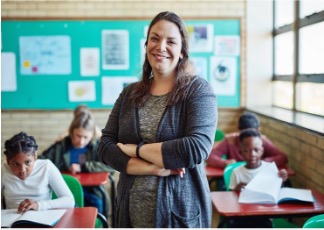
Participation in AiPL “helped our teachers look at the individual student and to stop for a beat and look at the whole child,” said Williams. “Our students started to have high expectations for themselves and our OST scores are one data point that we can look at and our OELPA4 scores for our English learner population are another. I’ve never had this before, but 12 students will exit the program this year because of their OELPA scores. This doesn’t sound like a lot, but when you’re going from two or three to 12, if was a big difference. One little guy, and I’ve never seen this in all of my years in education, went from 603 in the fall to 704 in the spring. I was shocked and am so happy for him, recognizing the work that went into this on his part, as well as the staff’s part in supporting him,” described Frantz.
“Those academics in the forefront of our students’ minds really did make a change in their belief about themselves too,” she Frantz. “The benefits of AiPL have been tremendous for my building and I would love to see it continue because I know when our kids leave South after 3rd grade, they go to a 4th grade building and they’ll want to know, ‘what are the expectations of me?’”
References
Darling-Hammond, L., Wechsler, M. E., Levin, S., Leung-Gagné, M., & Tozer, S. (2022). Developing effective principals: What kind of learning matters? [Report]. Learning Policy Institute. https://doi.org/10.54300/641.201.
Howley, C. B., & Howley, A. (2023). The evidence basis for primary features of the Ohio Improvement Process: Data-driven decision making within leadership teams. WordFarmers Associates.
Howley, C., Howley, A., Yahn, J., VanHorn, P., & Telfer, D. (2019). Inclusive instructional leadership: A quasi-experimental study of a professional development program for principals. Mid-Western Educational Researcher, 31(1), 3–23.
For More Information
For more information about the districts featured in this issue, contact:
- New Philadelphia City Schools:
- Jeff Williams, Assistant Superintendent, at williamsj@npschools.org
- Christa Frantz, Principal, South Elementary School, at frantzc@npschools.org
- The Richland School of Academic Arts: Scott Will, Superintendent, at swillrsaa@raseforkids.com
- Washington Court House City Schools: Tom Bailey, EdD, former Superintendent, at tom.bailey@wchcs.org
For more information about AIPL and OLi4 professional learning opportunities, contact:
- Libby Wallick, PhD, Consultant, Systems Development & Improvement Center, University of Cincinnati, at 614-897-0020 (ext. 106), or via email at libby.wallick@uc.edu.
For more information about resources to support districts, contact:
- OLAC Director Mike Trego at trego@basa-ohio.org; Elizabeth Lolli, PhD, Co-director, at lolli@basa-ohio.org; or Jim Gay, PhD, Consultant, at jimgay@basa-ohio.org.